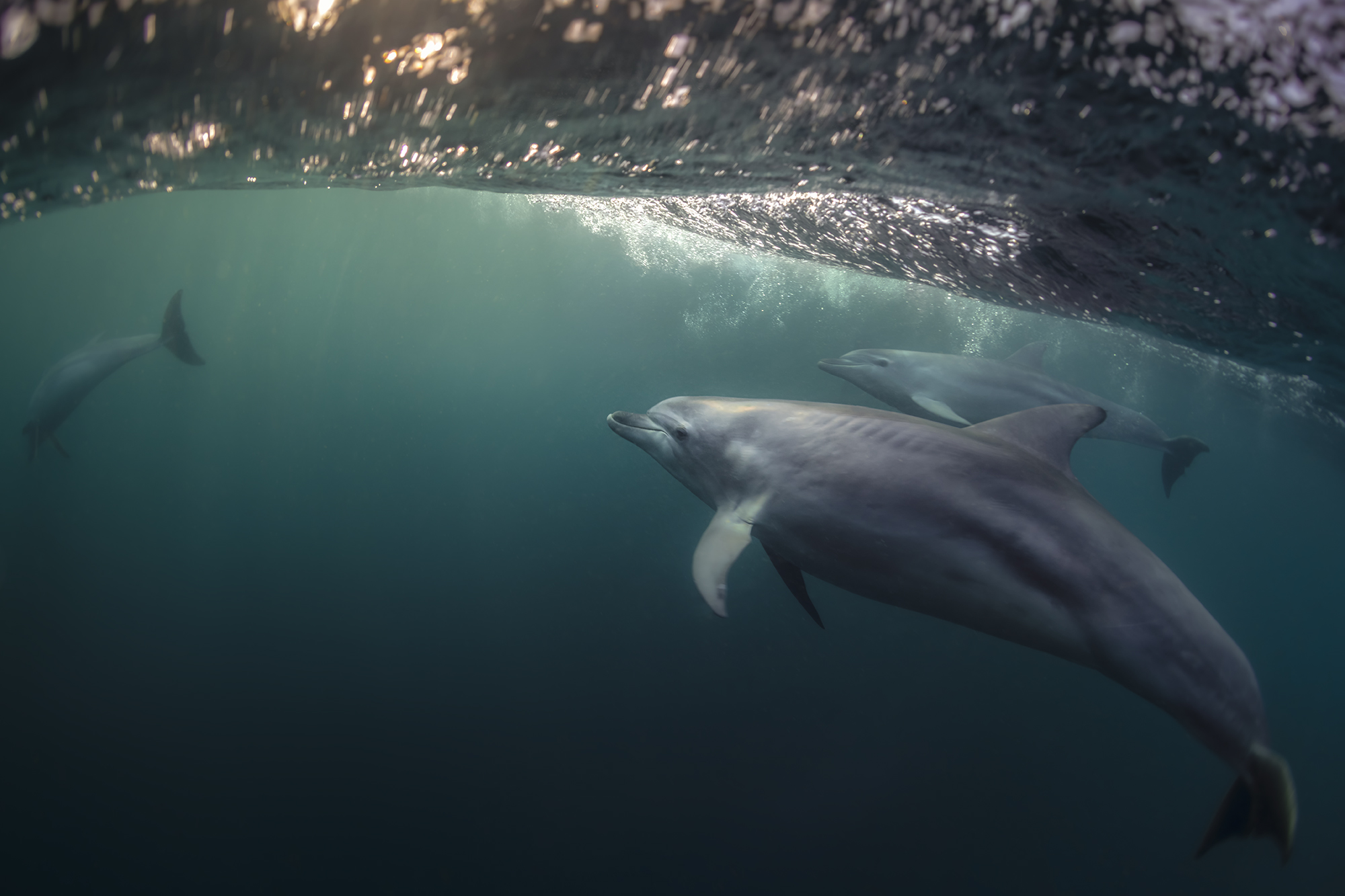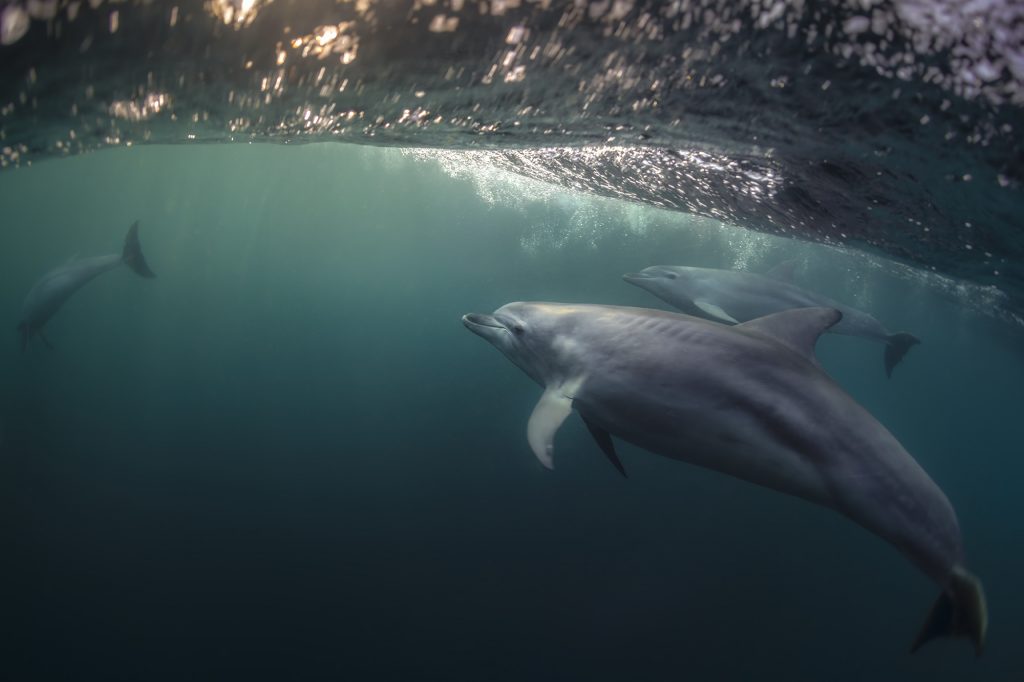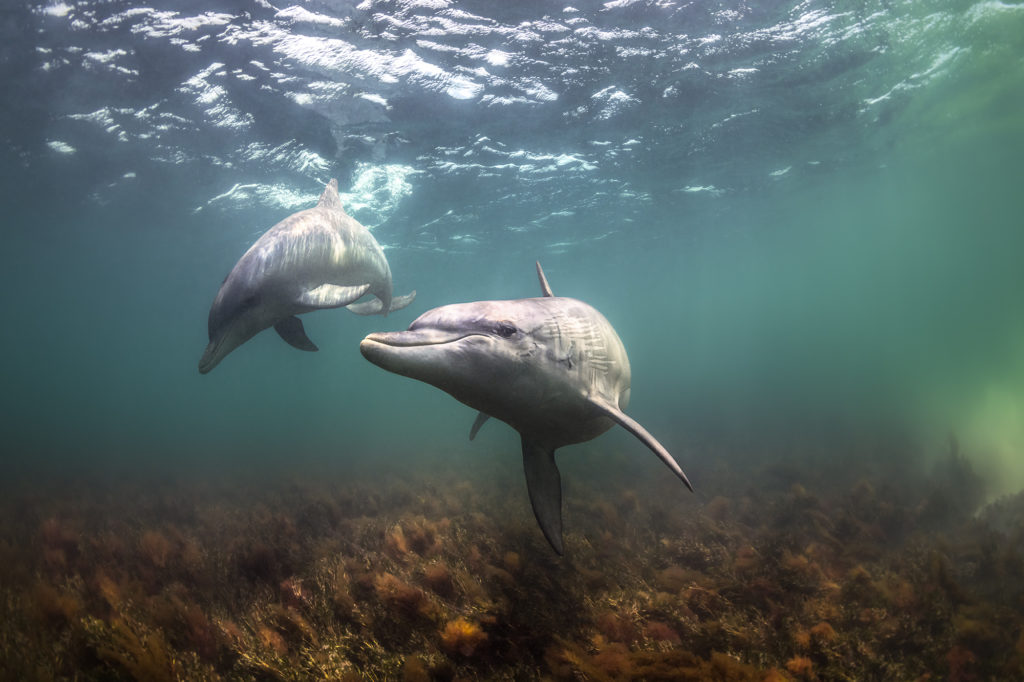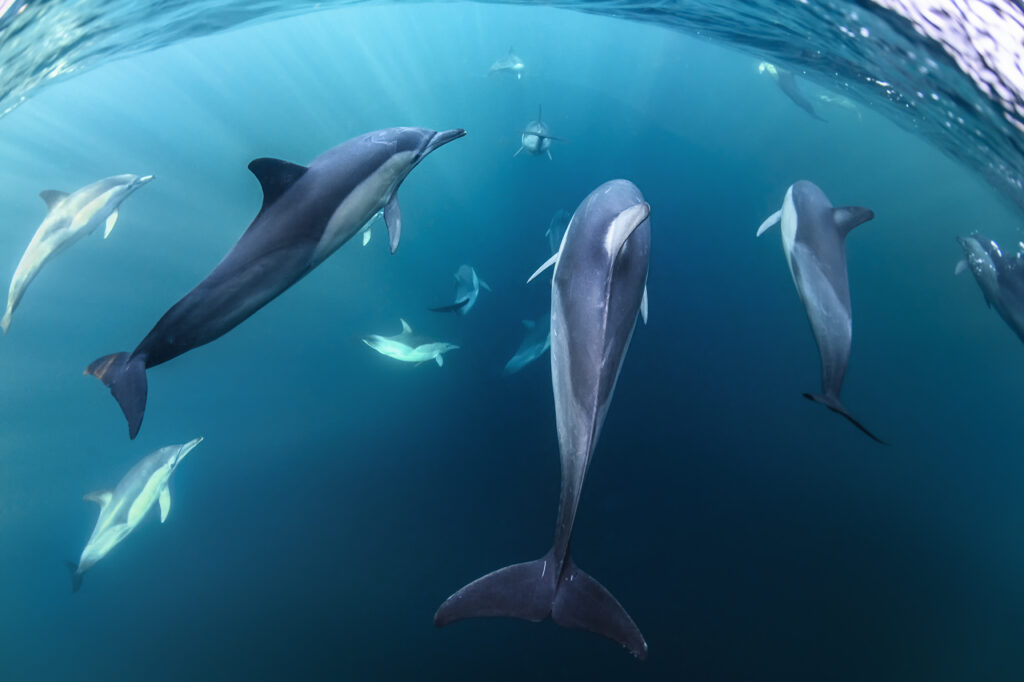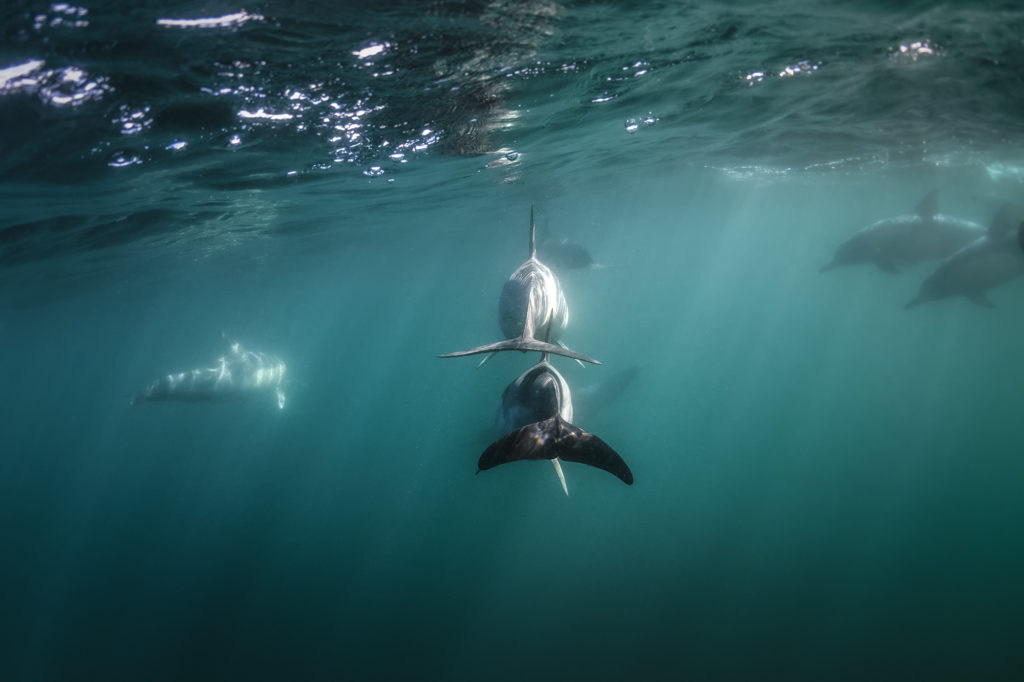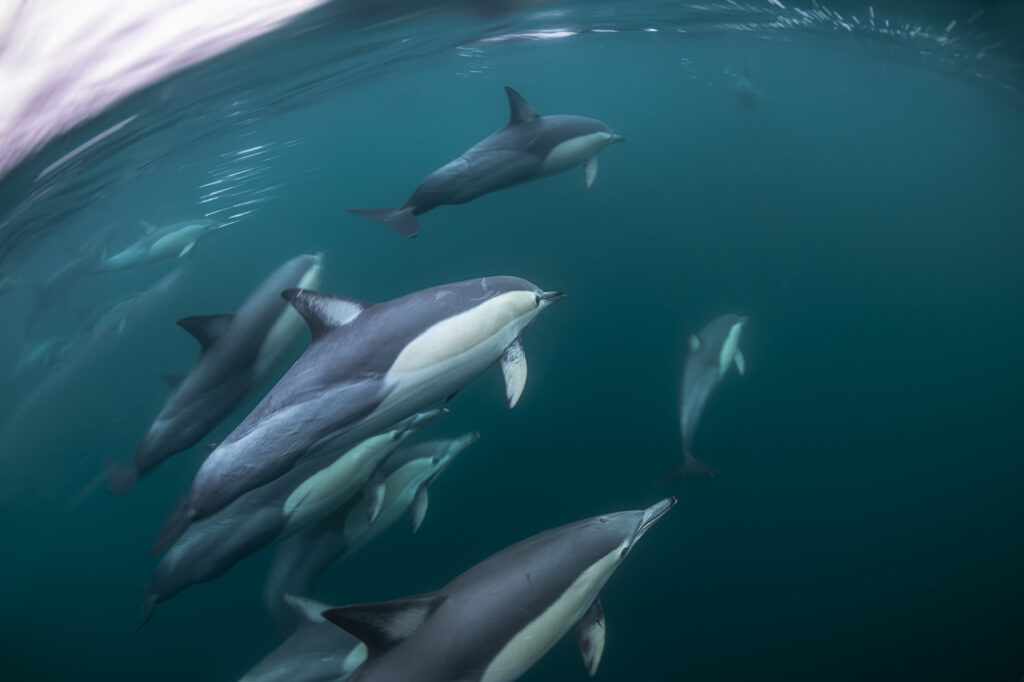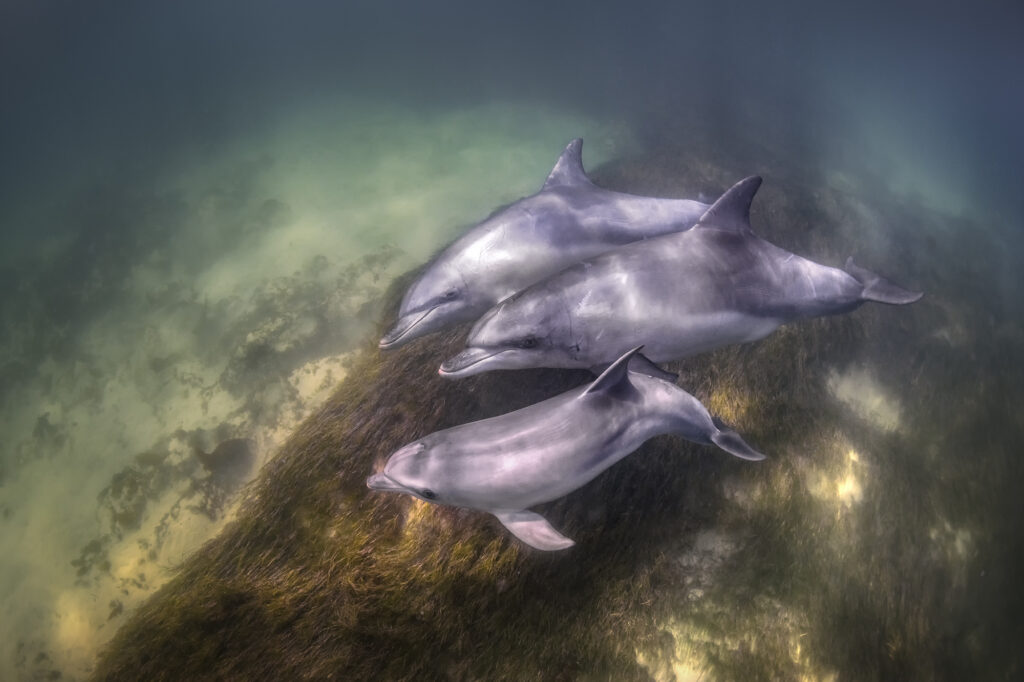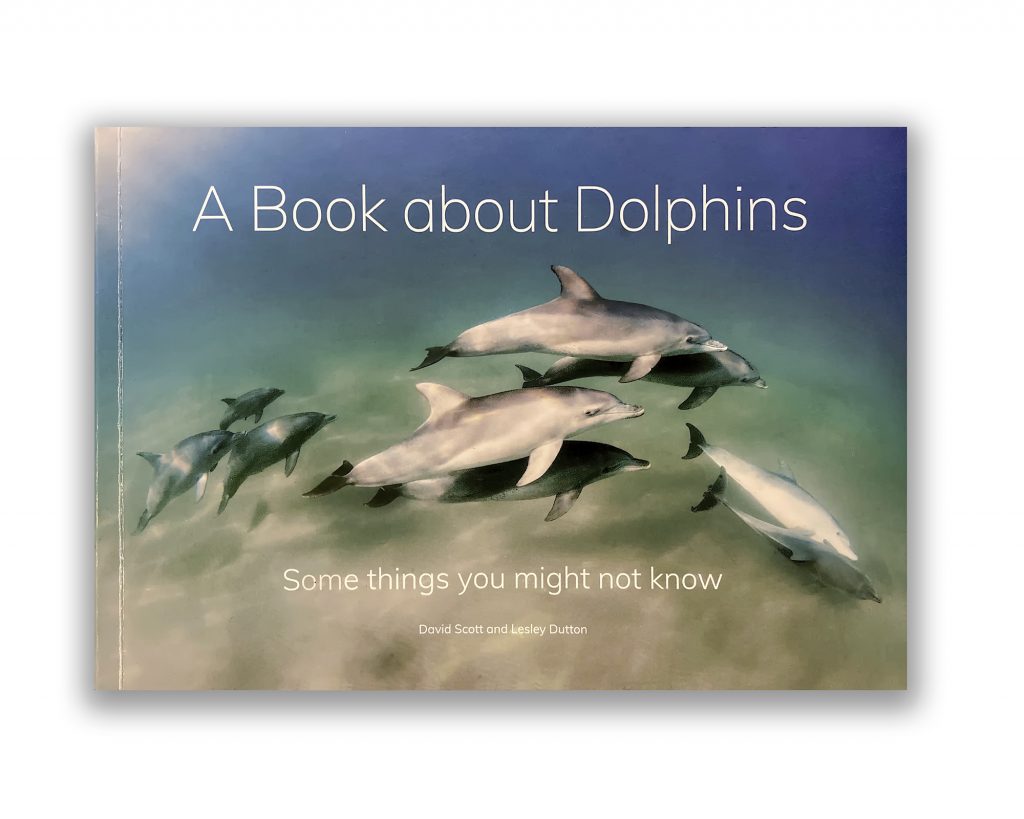The most well-known species of the family Delphinidae are the bottlenose dolphins, of which there are two species: the Indo-Pacific bottlenose (inshore bottlenose) and the common bottlenose (Tursiops Truncatus).
Indo-Pacific bottlenose dolphins are very similar to common bottlenose dolphins in appearance. Common bottlenose dolphins have a reasonably strong body, moderate-length beak, and tall, curved dorsal fins; whereas Indo-Pacific bottlenose dolphins have a more slender body build and their beak is longer and more slender.
The common bottlenose dolphins look almost identical to the inshore bottlenose dolphins, but grow about one-third larger and spend more time in deeper water away from the coast.
Dolphins are highly social animals, often living in pods of up to a dozen individuals, though pod sizes and structures vary greatly between species and locations. In places with a high abundance of food, pods can merge temporarily, forming a superpod; such groupings may exceed 1,000 dolphins.
Membership in pods is not rigid; interchange is common. They establish strong social bonds and will stay with injured or ill members, helping them to breathe by bringing them to the surface if needed. This altruism does not appear to be limited to their own species. The dolphin Moko in New Zealand has been observed guiding a female pygmy sperm whale together with her calf out of shallow water where they had been stranded several times.
I was lucky enough to witness a very similar exploit when a pod of bottlenose dolphins guided out of the shallow water two lost humpback whales. You can read the full story of the “Lifesaver Dolphins” in my previous story.
They have also been seen protecting swimmers from sharks by swimming circles around the swimmers or charging the sharks to make them go away.
Reports of cooperative human-dolphin fishing date back to the ancient Roman author and natural philosopher, Pliny the Elder. A modern human-dolphin partnership currently operates in Laguna, Santa Catarina, Brazil. Here, dolphins drive fish towards fishermen waiting along the shore and signal the men to cast their nets. The dolphins’ reward is the fish that escape the nets.
Dolphin society is very complex. Researchers have seen that young females learn to nurture from experienced mothers. The maternal group protects new calves and if a mother is killed, some of the ‘aunties’ can spontaneously lactate to feed her orphan so that it does not die too.
Newborns and their mothers stay in constant touch, literally, for several weeks. Like human children, young dolphins will later venture only a metre or two away at first, then further and further as they grow.
It is astounding that neither the mother nor the calf sleeps for the first month or more.
The calves remain dependent upon their mothers for four years.
The dolphin rules of courtesy and respect are learned from various adults around them, if necessary with a little nip or a tail smack.
You can find more interesting facts about dolphins in the book titled “A Book about Dolphins” which I used for this story series.
The authors, David and Lesley, put their hearts and souls into this amazing book. They have worked for more than a decade with wild dolphins in the Port Stephens-Great Lakes Marine Park. Only their love and passion exceed their knowledge about these majestic animals.
